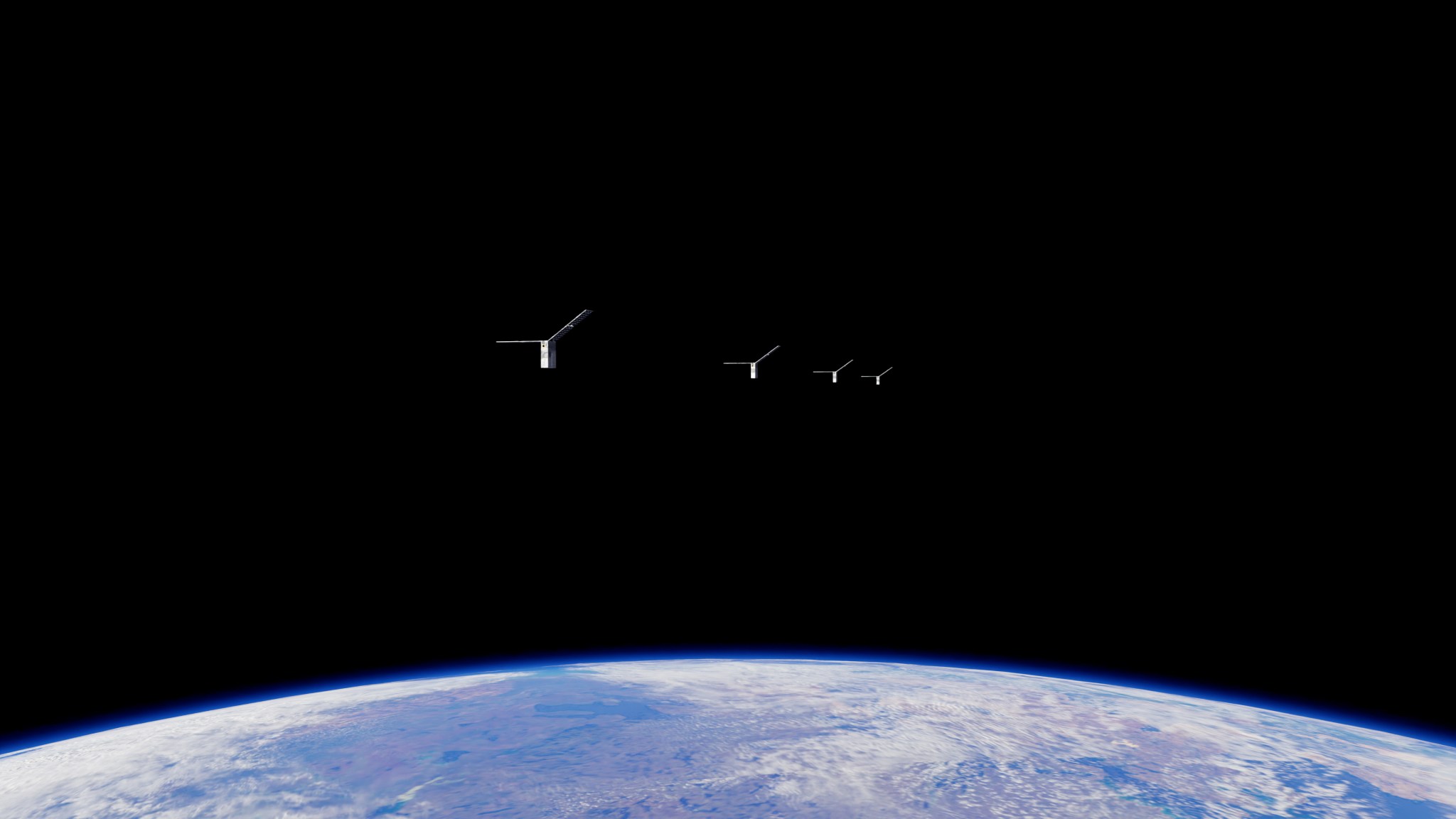Credits: NASA’s Ames Research Center
This July, NASA is sending a team of four six-unit (6U)-sized CubeSats into orbit around Earth to see if they’re able to cooperate on their own, without real-time updates from mission control. While that kind of autonomous cooperation may not sound too difficult for humans, this team will be robotic – composed of small satellites to test out key technologies for the future of deep space missions, where more complex and autonomous spacecraft will be essential.
Once launched, the four CubeSats will fly in two different formations to test several technologies paving the way towards a future where swarms of satellites can cooperate to do science in deep space. This mission, called Starling, will last at least six months, positioning the spacecraft about 355 miles above Earth and spaced about 40 miles apart.
“Starling, and the capabilities it brings for autonomous command and control for swarms of small spacecraft, will enhance NASA’s abilities for future science and exploration missions,” said Roger Hunter, program manager for NASA’s Small Spacecraft Technology program at NASA’s Ames Research Center in California’s Silicon Valley. “The mission represents a significant step forward.”
There are four main capabilities Starling will be testing: autonomously maneuvering to stay together as a group, creating an adaptable communications network amongst the spacecraft, keeping track of each other’s relative position, and responding to new information from onboard sensors by executing new activities on their own. In essence, Starling is looking to create a swarm of small satellites that can function as an autonomous community, capable of responding to their environment and completing tasks as a team.

Swarm technologies allow for the ability to take scientific measurements from multiple points in space, build networks capable of patching themselves if one piece goes down, and have spacecraft systems that don’t need to stay in touch with Earth to respond to changes in the environment. A swarm of spacecraft is also more resilient against failures or malfunctions within the team as each spacecraft is redundant to another. If one fails, the others can compensate.
Starling’s first mission carries a suite of four technologies to be tested out. The first is ROMEO (Reconfiguration and Orbit Maintenance Experiments Onboard), testing software designed to autonomously plan and execute maneuvers without any direct input from an operator. On the Starling mission, it will allow the satellites to fly in a cluster, both planning out trajectories and executing them on their own.
A Mobile Ad-hoc Network (MANET) is a communications system composed of wirelessly linked devices in which data is routed and rerouted automatically based on network conditions. An example on Earth is mesh Wi-Fi, in which multiple internet routers are placed throughout a home, allowing mobile devices to automatically connect to the strongest signal. In the same way, the Starling spacecraft have crosslink radios that allow communication between spacecraft when they are in range, with the onboard MANET software determining the best way to route traffic through the network of satellites. Starling will test this network, showing whether the system can automatically create and maintain a network in space over time.
Each CubeSat also has its own “star tracker” sensors onboard, normally used so that a satellite can keep track of its own orientation in space, much like sailors using the stars to navigate at night. Because the satellites will be relatively close together, in addition to stars, these sensors will pick up the light from their fellow swarm spacecraft and use specialized software to keep track of the rest of the swarm. Called StarFOX (Starling Formation-Flying Optical Experiment), this unique use of common spacecraft sensors will allow the backdrop of the stars to keep the swarm together.
Finally, the Distributed Spacecraft Autonomy (DSA) experiment demonstrates the ability of a swarm of spacecraft to collect and analyze science data onboard and cooperatively optimize data collection in response. The satellites will monitor Earth’s ionosphere – part of the upper atmosphere – and if one detects something interesting, it will communicate to the other satellites to observe the same phenomenon. The ability for satellites to autonomously react to an observation will enhance science data collection for a host of future NASA science missions.
After its primary mission is complete, the next stage for Starling will be a partnership with SpaceX’s Starlink satellite constellation to test advanced space traffic management techniques between autonomous spacecraft operated by different organizations. By sharing future trajectory intentions with each other, NASA and SpaceX will demonstrate an automated system for ensuring that both sets of satellites can operate safely while in relative proximity in low-Earth orbit.
“Starling 1.5 will be foundational for helping understand rules of the road for space traffic management,” said Hunter.
Robotics will always be at the forefront of exploration, both crewed and uncrewed. The ability to have satellites and spacecraft operate in a networked, autonomous, and coordinated capacity means NASA is ensuring humanity can go further and do better science than ever before.
NASA Ames leads the Starling project. NASA’s Small Spacecraft Technology program, based at NASA Ames and within NASA’s Space Technology Mission Directorate (STMD), funds and manages the Starling mission. Blue Canyon Technologies designed and manufactured the spacecraft buses and is providing mission operations support. Rocket Lab USA, Inc. provides launch and integration services. Partners supporting Starling’s payload experiments include Stanford University’s Space Rendezvous Lab in Stanford, California, Emergent Space Technologies of Laurel, Maryland, CesiumAstro of Austin, Texas, L3Harris Technologies, Inc., of Melbourne, Florida, and NASA Ames – with funding support by NASA’s Game Changing Development program within STMD.
For news media:
Members of the news media interested in covering this topic should reach out to the NASA Ames newsroom.
Author: Frank Tavares, NASA’s Ames Research Center


























